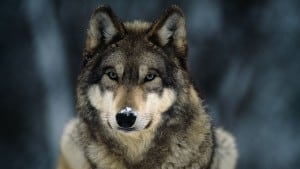
As of last winter, there were about 439 wolf packs and 2,278 wolves living in Minnesota, according to the Department of Natural Resources. The population was essentially stable, with no significant change from 374 packs and 2,221 wolves the previous year.
“The consistent wolf population surveys over the last several years are further evidence of the health and stability of Minnesota’s wolf population,” said Dan Stark, large carnivore specialist for the DNR.
Minnesota’s modern wolf population peaked in 2003-2004, when it was estimated at 3,020 animals. Minnesota’s goal for wolf recovery is 1,600 wolves; the federal recovery goal is 1,251 to 1,400.
During the hunting seasons in 2012 and 2013, 413 and 238 wolves were killed respectively, by hunters and trappers. A judge put the gray wolf back under federal protection in 2014, making it legal to kill one only in defense of human life. Population estimates have not yet returned to pre-hunting levels.
Wolf advocates said the new population estimate proves that wolf hunting can have long-term negative impacts, and that a large population in the state is necessary.
“The DNR confuses ‘wolf recovery’ with ‘keeping wolves just above the brink of extinction.,'” wolf advocate Maureen Hackett said in a statement. “The population levels, still below pre-trophy hunt levels, are drastic, reckless, and unacceptable for responsible wolf recovery and vital genetic diversity.”
The population estimate is devised by calculating the total area occupied by wolf packs, average wolf pack territory size, and average mid-winter pack size. The DNR and partner agencies collect data by putting GPS collars on wolves, using them to determine the size of its pack’s territories. Wildlife managers then locate the collared wolves by airplane in the middle of winter, and attempt to count the number of animals in its pack.
Read the DNR’s full statement and 2016 population report (PDF).

